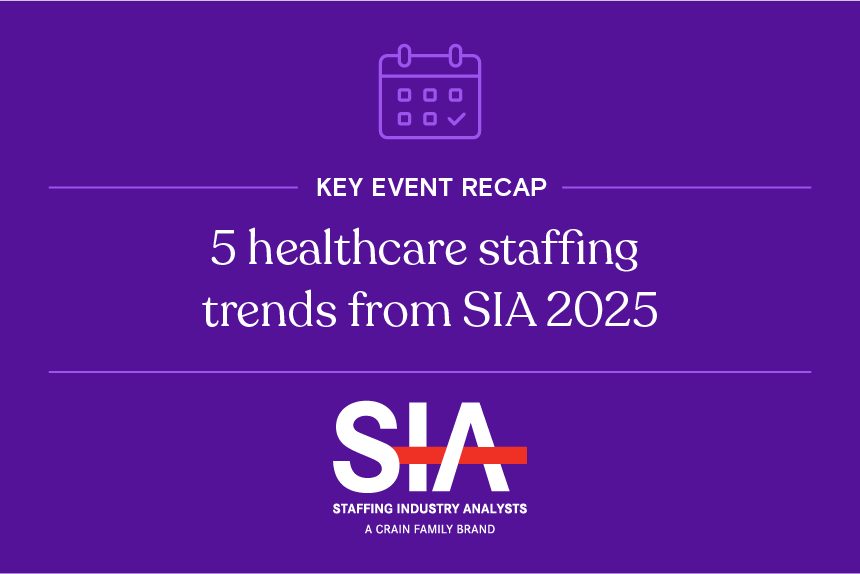Healthcare risk is becoming harder to quantify—and more expensive to get wrong. Costs are rising unpredictably, driven by everything from pharmaceutical inflation to labor shortages and advanced technologies. At the same time, the models traditionally used to assess risk are under pressure. They were built for a more stable system—one where historical data, demographic profiles, and standard utilization patterns were enough.
That’s no longer the case.
Today’s environment demands a more dynamic, forward-looking approach to risk assessment. Payors, underwriters, and actuaries must grapple with a broader, faster-moving set of variables—many of which are interconnected and evolving in real time.
Successfully understanding and anticipating these shifts requires a keen focus on the most impactful forces at play. Here are five major trends currently redefining how risk is assessed across the healthcare spectrum:
Rising drug prices introduce financial risk
Pharmaceutical costs have become one of the most volatile and fastest-growing components of total healthcare spending. While drug prices have long been a factor in risk models, the current pace, unpredictability, and concentration of cost growth, especially in specialty pharma and gene therapies, are testing the limits of conventional risk management methods.
According to trends in prescription drug spending by the U.S. Department of Health and Human Services, specialty drugs now account for over 50% of total drug spend, despite being used by less than 2% of the population.
Consider, for example, Zolgensma, an FDA-approved gene therapy used to treat spinal muscular atrophy (SMA) in infants. At a list price of $2.1 million for a one-time treatment, Zolgensma is one of the most expensive drugs in the world.
For payors and underwriters, this single therapy poses a massive financial risk. If even one member requires the treatment, it can wipe out underwriting margins or trigger high-cost pooling layers. Also, because SMA is a rare disease, traditional claims data may not flag the risk at all—leading to a blind spot in risk pricing.
And Zolgensma isn’t an outlier event. It may be a sign of where the market is heading. As more high-cost therapies come online, stakeholders must rethink how they model, mitigate, and manage drug-driven risks.
To prepare and forecast effectively for these catastrophic-level pharmacy claims, payors and underwriters need to invest in (or develop) pricing buffers and cost-containment strategies. For actuaries, the rising costs of drugs is encouraging them to adapt quickly. Many now use more than just claims data to mode risk; they might leverage data like birth rates and carrier prevalence and integrated predictive tools to better understand their segment of the healthcare market.
Hospital expenses and inflation rise
While inflation affects all sectors of the economy, the impact of rising costs of everything medical equipment and supplies to wages and operational expenses has hit the healthcare industry particularly hard.
These economic forces can pressure healthcare leaders and stakeholders in a variety of ways.
The cost growth of medical services usually leads the pack, rising at a faster rate year-over-year than other economic sectors. This is typically due to general inflationary increases in the cost of raw materials, manufacturing, and transportation. Beyond medical expenses, the costs of simply operating hospitals and healthcare facilities have gone up.
Labor is another large expense for healthcare providers. The wages and salaries for healthcare professionals must keep pace with (or exceed) general inflation if the healthcare facility wants to remain competitive in the labor market and retain its talent.
Staffing shortages and the prevalence of chronic diseases, among other factors, also influence the rising costs of care—we'll discuss them in the coming sections.
For payors, underwriters, and actuaries, inflation makes the core of their business more difficult and less predictable.
Rising costs of care introduces more volatility into claims projections, creating a heftier financial burden for payors and adding more complexity to how underwriters forecast future claims costs. To better manage this risk, some payors may tighten control over prior authorizations and medical necessity reviews, attempt to steer members towards more cost-efficient facilities, or encourage receiving care in lower-cost settings outside the hospital.
Meanwhile, underwriters might need to perform more granular risk assessments of potential clients and consider factors that might make them more susceptible to high-cost claims that would be further exacerbated by inflation—like chronic conditions. The same is true for actuaries. As the architects of risk models and financial projections, actuaries may also need to develop more sophisticated and granular risk models to allow for more precise pricing and a better understanding of where inflationary pressures are most acute.
Healthcare labor shortages and workforce instability threaten reliability, cost, and quality of care
As we all know, healthcare is a labor-intensive industry. And while the direct cost of labor is a known concern for providers and payors (as we just discussed), what’s less visible—but just as important—is how workforce instability threatens the reliability, cost, and quality of care.
We cover multiple facets of this issue in our Intelligence Report, “Addressing the healthcare staffing shortage,” but it’s clear to say that the ongoing staffing shortage is an operational, clinical, and financial issue for providers. In turn, insurers and those who manage risk now need to account for the impact of this trend in their risk models and forecasting.
Staffing shortages impacts care in three major ways:
- Patient outcomes: Delays in treatment, longer wait times, and reduced continuity of care lead to complications, readmissions, and avoidable hospitalizations. For payors, this translates into higher utilization and increased claims severity.
- Cost inflation: In recent years, facilities have increasingly turned to contract labor, particularly travel nurses, to fill gaps in care at exorbitant hourly rates (sometimes three times higher than full-time staff). These costs are passed on through higher facility charges, increasing medical loss ratios and making cost forecasting less predictable.
- Volatility across markets: Some regions face acute shortages, especially rural and underserved urban areas. This geographic variability introduces localized risk that standard rating models may overlook.
These operational and clinical disruptions are now translating into real financial risks that payors, underwriters, and actuaries can’t afford to ignore.
Payors are increasingly having to factor in provider capacity when designing networks and managing population health. A plan may technically offer “in-network” access, but if a region is short on providers, access is delayed—leading to worse outcomes and higher downstream costs.
For underwriters, labor shortages represent a hidden risk multiplier. A group plan in a heavily understaffed region may see higher-than-expected claims—not because the members are riskier, but because the system around them is less equipped to deliver timely care.
Finally, labor instability undermines traditional assumptions actuaries make when modeling risk. Standard models assume a stable care delivery infrastructure—but when providers are burnt out or unavailable, those assumptions fall apart. Modern actuarial models now need to consider things like rising labor costs, whether certain regions have more staffing gaps than others, how long patients are waiting to get care, and whether shortages are causing patients to skip or delay receiving care at all.
Chronic disease prevalence continues to increase
Chronic diseases have always been a leading driver of healthcare costs—but today, their financial and actuarial impact is reaching a new level. Conditions like diabetes, heart disease, obesity, hypertension, and respiratory illnesses now account for nearly 90% of total U.S. healthcare expenditures, and they are increasingly prevalent in younger populations, according to data from the CDC.
Treating and managing chronic conditions is often a complex, challenging undertaking. That’s why it’s no surprise that chronic conditions represent one of the most significant challenges and cost drivers in modern healthcare, fundamentally altering how payors, underwriters, and actuaries assess and manage risk.
Managing chronic disease for payors is a careful balancing act between cost control and care coordination. If these conditions are poorly managed, the result is high-cost complications—such as ER visits, hospitalizations, and disability claims. But effective intervention can bend the cost curve and improve outcomes.
For underwriters, chronic disease presents a layered risk. It’s not just about identifying who has a condition—it’s about understanding how well it’s being managed, what the long-term trajectory looks like, and how that aligns with the group or population being priced. Underwriters may consider modifying their strategies to include risk modifiers for populations with low access to primary or specialist care, review condition prevalence by more specific cohorts, and incorporate lifestyle factors in their risk calculations.
The biggest challenge for actuaries is that chronic disease is not a static problem. It evolves over time as populations age and change, and so the models they use to estimate cost and risk need to change too. To keep pace, actuaries may use predictive analytics and social determinants of health (SDoH) data to better forecast utilization, flag members at risk of complications, and enable earlier interventions.
Artificial intelligence offers hope for efficient, accurate modeling
Of course, it would be remiss of me not to mention how artificial intelligence has impacted how payors, underwriters, and actuaries understand the healthcare landscape, analyze populations, and create risk models.
AI offers these roles several benefits, including speed, efficiency, precision, and more effective forecasting.
For payors, AI can help:
- Automate administrative tasks such as claims processing and customer service inquiries to free staff to focus on more complex tasks
- Analyze claims, historical data, health records, and more to identify high-cost members in need of proactive intervention
- Build and manage high-value provider networks, potentially contributing to better cost control and improved care quality
For underwriters, AI is:
- Accelerating data collection and initial risk assessment, speeding up the time it takes to issue a policy
- Creating more personalized and granular pricing models
- Uncovering insights and patterns in data that may not be apparent through traditional analysis
And actuaries are using AI to enhance their models for better trend analysis, behavioral forecasting, and predictive cost modeling. However, many AI models are “black boxes,” which has left many actuaries understandably cautious (rightfully so). Without a clear explanation of how an AI model has reached a conclusion, actuaries need to approach this innovative new technology with care.
Learn more
To make the world of risk management even more complicated, the reality of healthcare is that rising drug costs, labor shortages, inflation, chronic conditions, and AI are not isolated trends. They are interconnected forces redefining the cost structure and volatility of healthcare.
Organizations that invest in smarter, more flexible risk frameworks will not only manage volatility better—they’ll be in a stronger position to drive sustainable value across the system.
Having access to the right data and analytics will be key. Whether you need detailed claims data, insights into facilities and healthcare professionals, or market or consumer-level intelligence, we have you covered. Our solutions can help you elevate your strategy and make it easier to understand what’s happening in your market. To get started, sign up for a free trial with Definitive Healthcare today.





